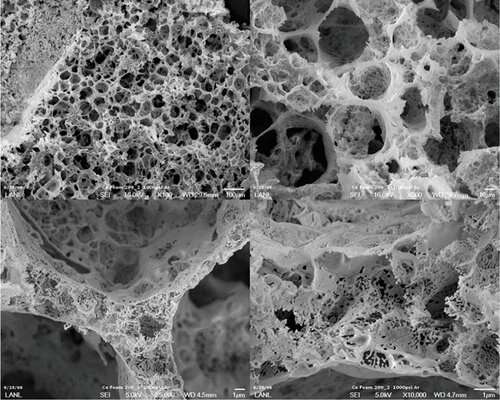Novel chemical process a first step to making nuclear fuel with fire

Developing safe and sustainable fuels for nuclear energy is an integral part of Los Alamos National Laboratory's energy security mission. Uranium dioxide, a radioactive actinide oxide, is the most widely used nuclear fuel in today's nuclear power plants. A new "combustion synthesis" process recently established for lanthanide metals—non-radioactive and positioned one row above actinides on the periodic table—could be a guide for the production of safe, sustainable nuclear fuels.
"Actinide nitride fuels are potentially a safer and more economical option in current power-generating systems," said Bi Nguyen, Los Alamos National Laboratory Agnew postdoc and lead author of research recently published in the journal Inorganic Chemistry, which was selected as an American Chemical Society Editors' Choice Featured Article.
"Nitride fuels are also well suited to future Generation IV nuclear power systems, which focus on safety, and feature a sustainable closed reactor fuel cycle. Actinide nitrides have superior thermal conductivity compared to the oxides and are significantly more energy dense," said Nguyen. Nitrides are a class of chemical compounds that contain nitrogen, versus oxides, which contain oxygen.
Actinide nitride fuels would provide more safety and sustainability because of their energy density, offering up more energy from less material, as well as better thermal conductivity—allowing for lower temperature operations, giving them a larger margin to meltdown under abnormal conditions.

Actinide nitrides, however, are very challenging to make and the production of large amounts of high purity actinide nitrides continues to be a major impediment to their application. Both actinides and lanthanides are at the bottom of the periodic table and potential methods to make actinide materials are typically first tested with the lanthanides because they behave similarly, but are not radioactive.
Los Alamos National Laboratory and Naval Research Laboratory scientists discovered that LnBTA [lanthanide bis(tetrazolato)amine] compounds can be burned to produce high-purity lanthanide nitride foams in a unique technique called combustion synthesis. This method uses a laser pulse to initiate dehydrated LnBTA complexes, which then undergo a self-sustained combustion reaction in an inert atmosphere to yield nanostructured lanthanide nitride foams. This work was funded by the Laboratory Directed Research and Development (LDRD) program.
LnBTA compounds are easily prepared in bulk and their combustion is readily scalable. There is an ongoing collaboration between the Laboratory's Weapons Modernization and Chemistry divisions to examine actinide analogues for combustion synthesis of actinide nitride fuels.
More information: Thuy-Ai D. Nguyen et al, Lanthanide Complexes of Bis(tetrazolato)amine: A Route to Lanthanide Nitride Foams, Inorganic Chemistry (2020). DOI: 10.1021/acs.inorgchem.0c02480
Journal information: Inorganic Chemistry
Provided by Los Alamos National Laboratory


















